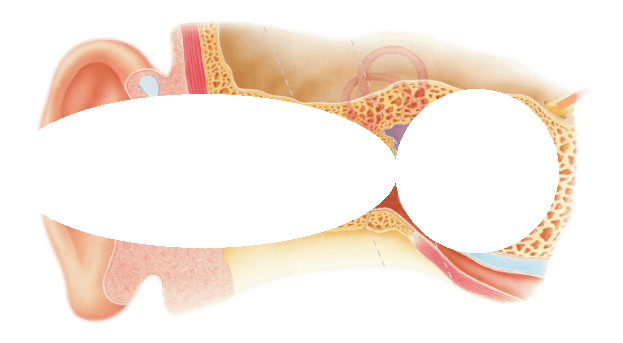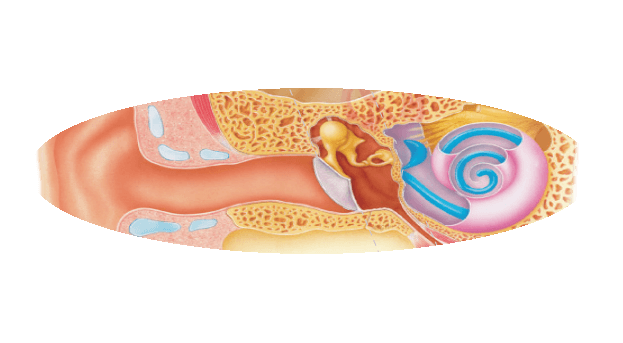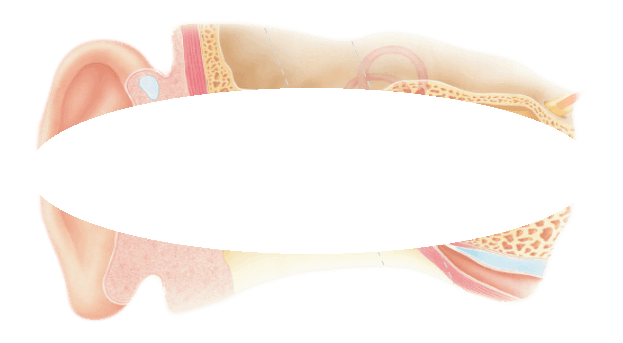




Conductive hearing loss
A conductive hearing loss is often temporary and can sometimes be corrected with wax removal, medication or surgery. Conductive loss stems from problems in the outer or middle ear and can be caused by:
- Infection
- Build-up of wax or fluid
- Punctured eardrum
- Otosclerosis – an abnormal bone development in the middle ear
| Hearing | Degree of Loss | Impact |
|---|---|---|
| Normal Hearing | 0 to 25 dB | Hearing is considered normal |
| Mild Hearing Loss | 25 to 40 dB | Difficulty hearing soft speech in noisy situations |
| Moderate Hearing Loss | 40 to 60 dB | Difficulty hearing moderate speech when background noise is present |
| Severe Hearing Loss | 60 to 80 dB | Difficulty hearing loud speech, but heard if amplified |
| Profound Hearing Loss | 80 dB or more | Difficulty hearing and understanding, even with amplification |

Temporary hearing loss
There are times where a hearing loss is temporary. A temporary hearing loss is common and can be caused by any of the following:
- Excessive earwax
- Ear infections
- Allergies
- Sinus problems
- Certain medications
To find out if you or someone you love has a hearing loss, please contact your local Hearing Care Professional.

